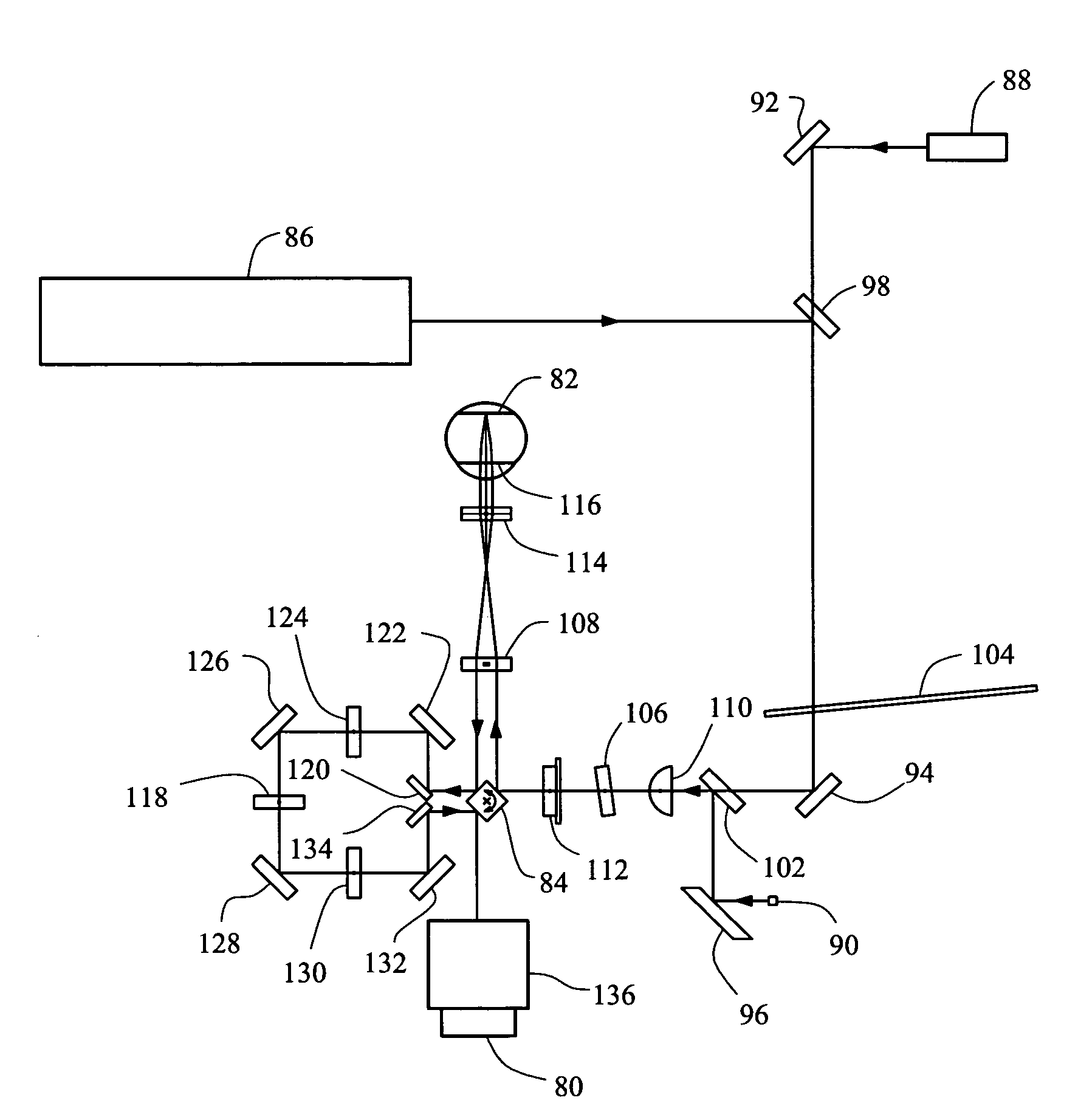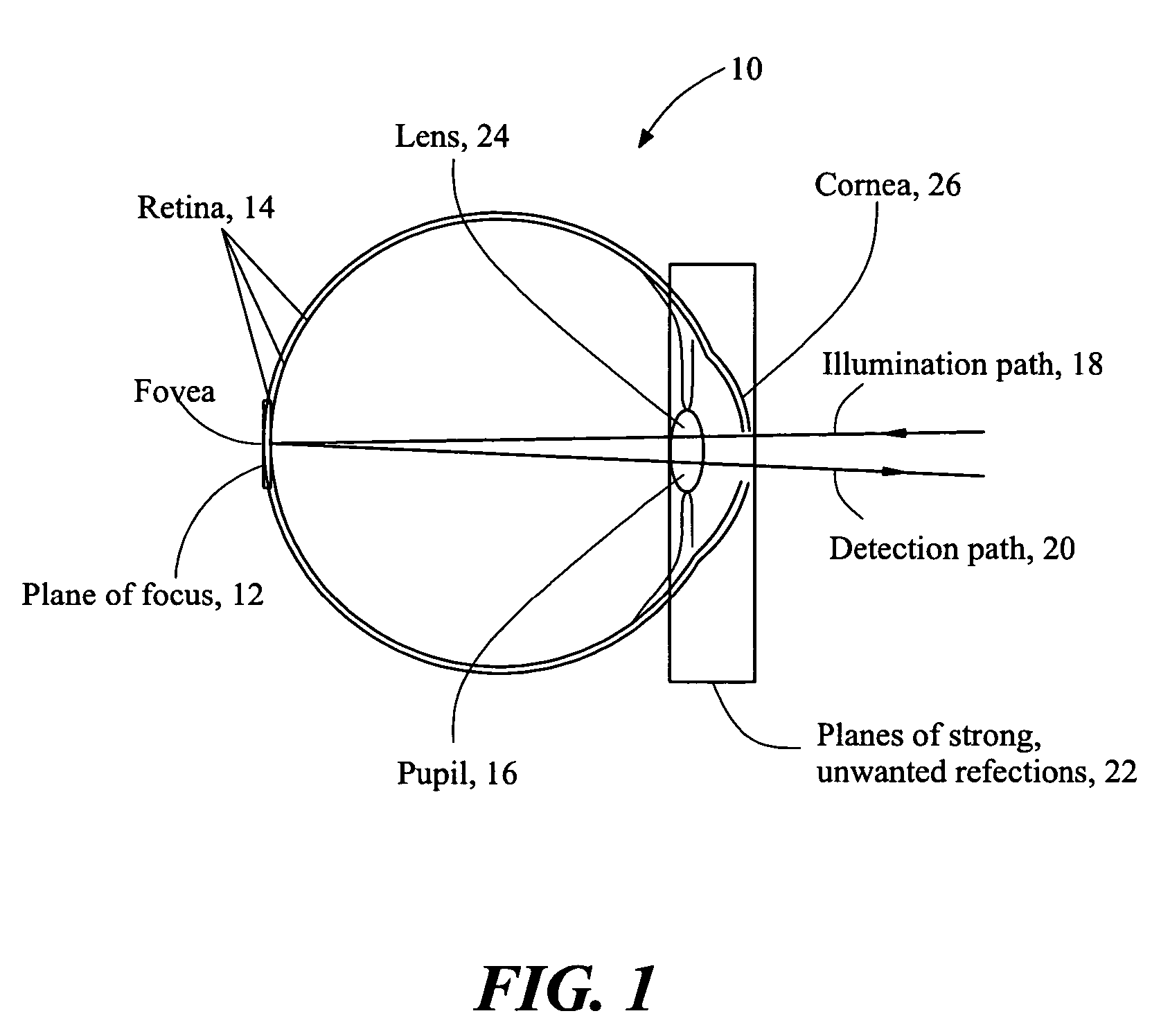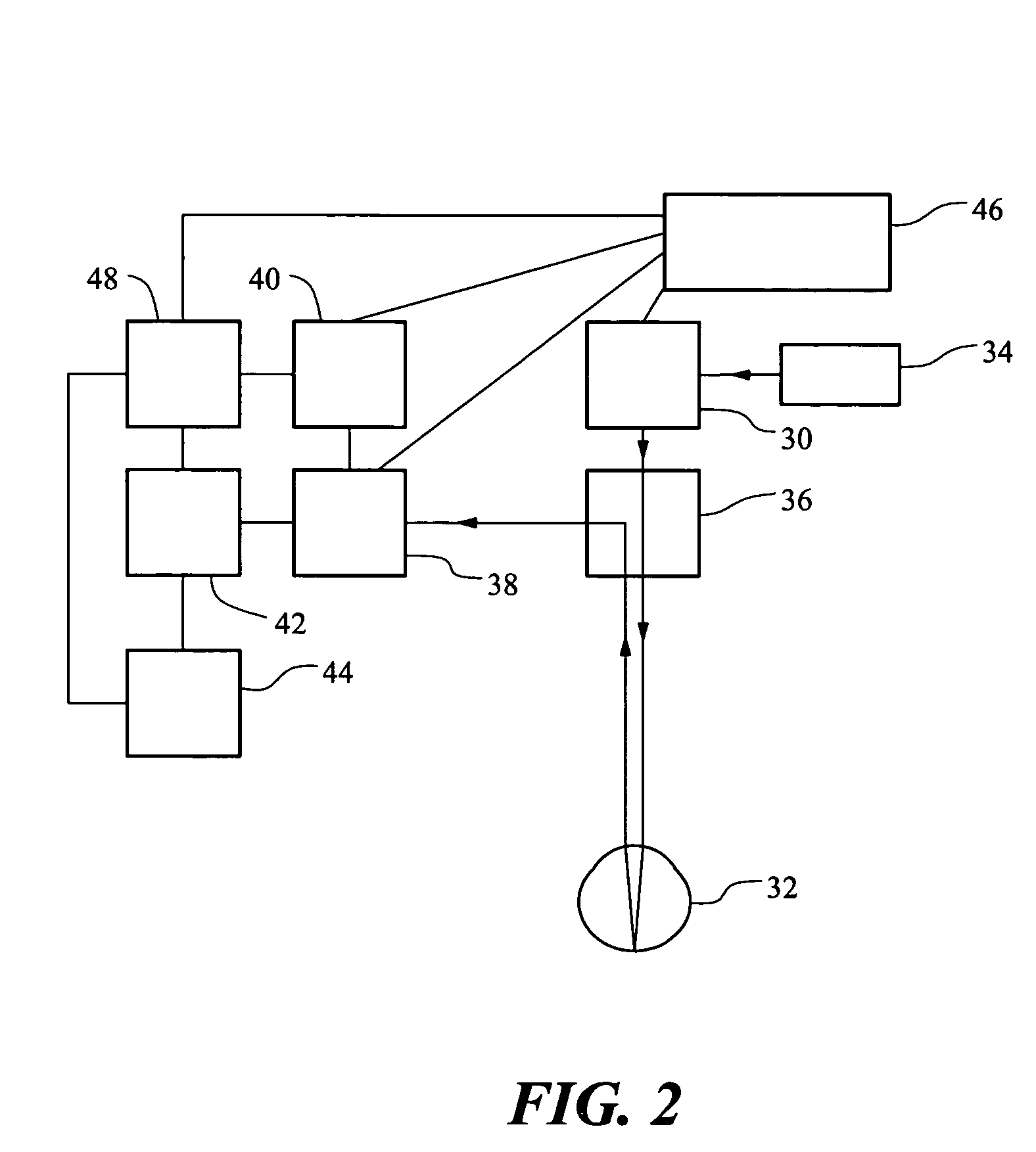Device for digital retinal imaging
a retinal imaging and digital technology, applied in the field of digital retinal imaging, can solve the problems of permanent vision loss in an area, none of the neural cells of the retina can yet be readily regenerated in the adult human, and human retina is susceptible to damage from a variety of causes, so as to achieve low power requirements, high contrast image, and simple operation.
- Summary
- Abstract
- Description
- Claims
- Application Information
AI Technical Summary
Benefits of technology
Problems solved by technology
Method used
Image
Examples
Embodiment Construction
[0029]The present invention relates to a small, portable lightweight instrument or device of low cost particularly suitable for examining the retinal and subretinal layers of the eye 10 (see FIG. 1) for abnormalities. The device is noncontact and does not require drops to dilate the pupil of the eye. Referring to FIG. 1, the plane of focus 12 of the device for the retina 14 is that with the greatest amount of light return. When a human retina is imaged, light from an illumination source is passed through a slit to produce a line source and scanned across a desired focal plane in the eye after passing through the entrance pupil 16 of the eye, which is narrower than the focal plane of interest. Light enters through one or more portions of the pupil (see exemplary illumination path 18) and is remitted and collected through primarily other portions (see exemplary detection path 20), which minimizes the collection of unwanted light that is reflected from other planes 22, such as the lens...
PUM
 Login to View More
Login to View More Abstract
Description
Claims
Application Information
 Login to View More
Login to View More - R&D
- Intellectual Property
- Life Sciences
- Materials
- Tech Scout
- Unparalleled Data Quality
- Higher Quality Content
- 60% Fewer Hallucinations
Browse by: Latest US Patents, China's latest patents, Technical Efficacy Thesaurus, Application Domain, Technology Topic, Popular Technical Reports.
© 2025 PatSnap. All rights reserved.Legal|Privacy policy|Modern Slavery Act Transparency Statement|Sitemap|About US| Contact US: help@patsnap.com



